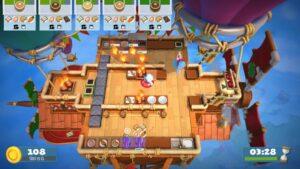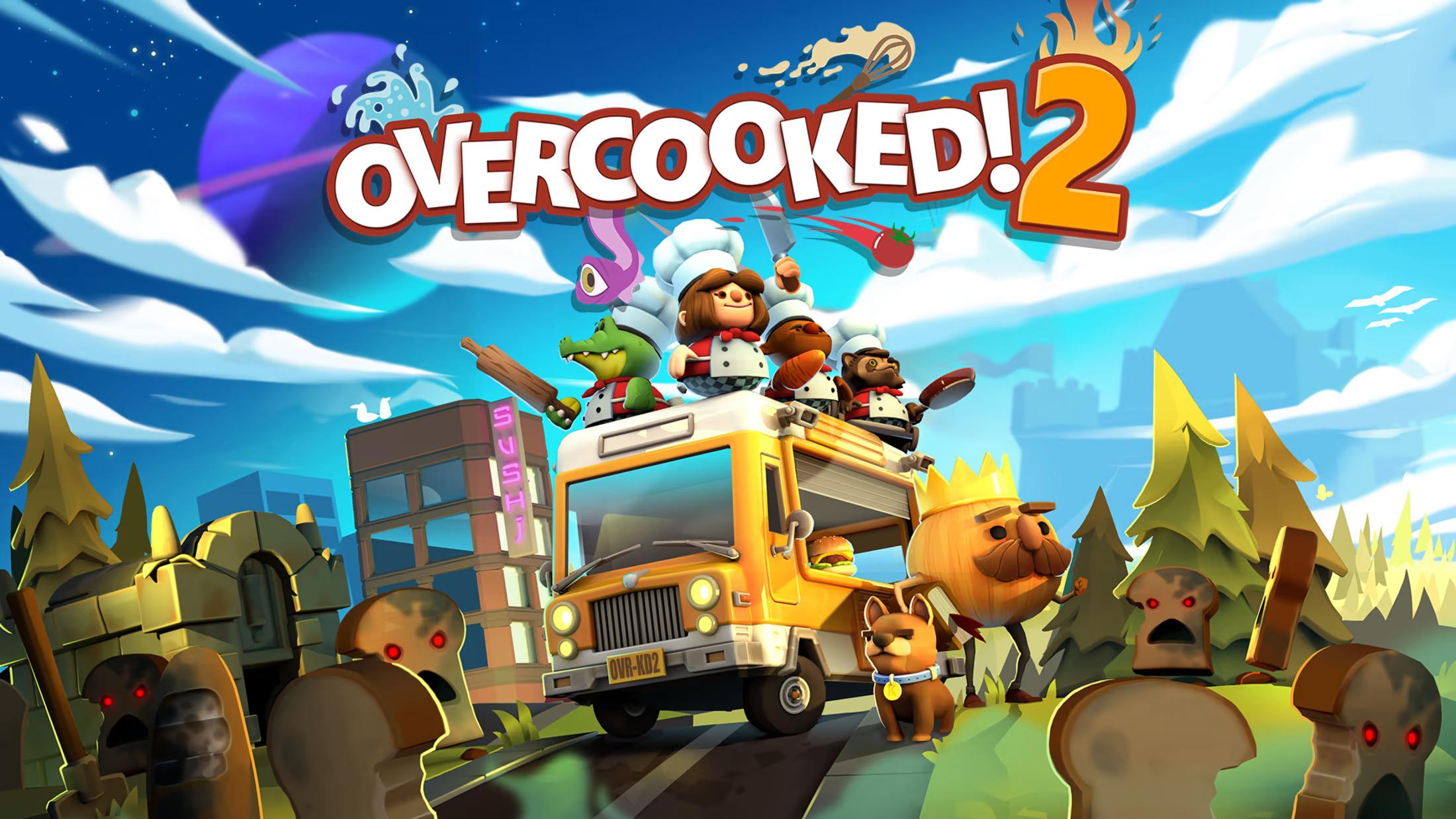Overcooked! 2 is a widely loved multiplayer video game available on Steam, PlayStation 4 and 5, Xbox, Nintendo Switch and more. It was designed by Phil Duncan, developed by Ghost Town Games, and published by Team17. It’s potential competitor: Pizza Pizzazz, our social card game in the works. While their platforms offer vastly different playstyles, both games use their premise of cooking for customers to drive fellowship and challenge.
The basis of both games is to follow certain recipes to make with given ingredients and to serve customers to earn points. To start, in Pizza Pizzazz, these ingredients are cards that players must draw and place onto a pizza. With limited actions a turn, players strategize how to best use their resources. It’s a race to assemble those ingredients before other players do. In Overcooked, the ingredients are simpler, but there are more recipes to handle between levels. Moreover, there are additional actions players must do to process the ingredients, like chopping and cooking. The challenge here comes from the time limitation that places pressure on the players.
Furthermore, both games use sabotage to further the challenge and fellowship aesthetics. Players can sabotage each other by moving around played pizza ingredients in our game. This might mean a player must take that ingredient back or Overcooked sabotages by changing the setting of the game. There was one level I was playing where fire would spew all over our workstation, forcing us to use the fire extinguisher to reach ingredients. Since I was running around with the bowl, I had to ask one of my friends to extinguish the fire for me.

The variations in these sabotages are due to the differences in competition. Overcooked encourages cooperation from its players, as there is little benefit from enraging your teammates. Conversely, Pizza Pizzazz is scored individually. Thus, it enables chaos because each player is building their own pizzas, and stealing an ingredient might mean you serve a customer sooner. While both mechanics enable fellowship, their dynamics and competitive motivators move these two games in opposite sides of a cooperation spectrum.
Despite my experience with Overcooked (the first one), my experience with Overcooked 2 relatively smooth sailing. With a couple of friends, we beat the entire game in four hours with mostly three stars. There was no yelling or shouting, as everyone was constantly communicating on their task updates. I believe the designers lowered the points required to achieve three stars in Overcooked 2 to encourage the achievement of overcoming a level, to accentuate the fellowship aspect of Overcooked, rather than the challenge-orientated approach seen more predominantly in the first Overcooked. My main critique for Overcooked would be the player number limitation, as some levels feel impossible to achieve unless you have all four players. As for our game, we initially made a variety of ingredients to playtest with, but shrunk that down just to sauce, cheese, meat, and veggie for now, to make it easier to serve customers. We’re still deliberating on whether to expand ingredient variety. However, I do believe that lowering the difficulty of completing a pizza can facilitate more complex interactions like stealing. By decreasing the challenge of the game, we can focus more on the fellowship aspect like Overcooked 2 did.





